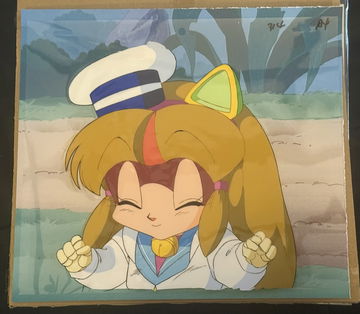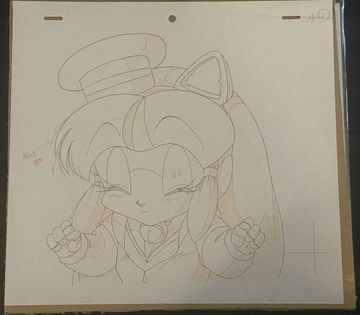Kyattō Ninden Teyandee Animation cel - episode 25 (1990)
Character: Otama / Francine
Episode: 25 – “かわいい?ヤッ太郎女になる / Gender Bender Butterflies! (Ending scene)
Medium: Hand-painted production cel on acetate with randomly chosen painted stock background
Layer Code: 34-84 (marked in upper-right corner)
Studio: Tatsunoko Production (1990–1991 TV run)
Status: Single-layer setup (no visible A/B overlap)
Cel animation is a traditional animation technique that involves hand-drawing and painting individual frames onto transparent celluloid sheets, called cels, and photographing them in a sequence, to create movement. The cels are layered over static backgrounds, with each cel representing a slight progression of movement, and when played back quickly, these frames create the illusion of a moving image. This method, made popular by Walt Disney Studios, was the dominant form of animation until the rise of digital animation in the late 20th century.
How this works:
Pencil Key Frames: Lead animators drew the main poses on paper.
In-Betweens: Assistants added the transitional drawings that created motion.
Inking & Painting: Line art was traced onto clear cellulose acetate sheets (the “cels”) and painted on the reverse side to keep lines crisp.
Layering: Each character or effect element received its own cel layer – labeled A, B, C, etc. – and was stacked over a hand-painted background.
Photography: The composite stack was photographed frame-by-frame, producing the illusion of movement when played in sequence.
Because every cel represented a single frame, they are one-of-a-kind production artifacts—a direct slice of animation history.




